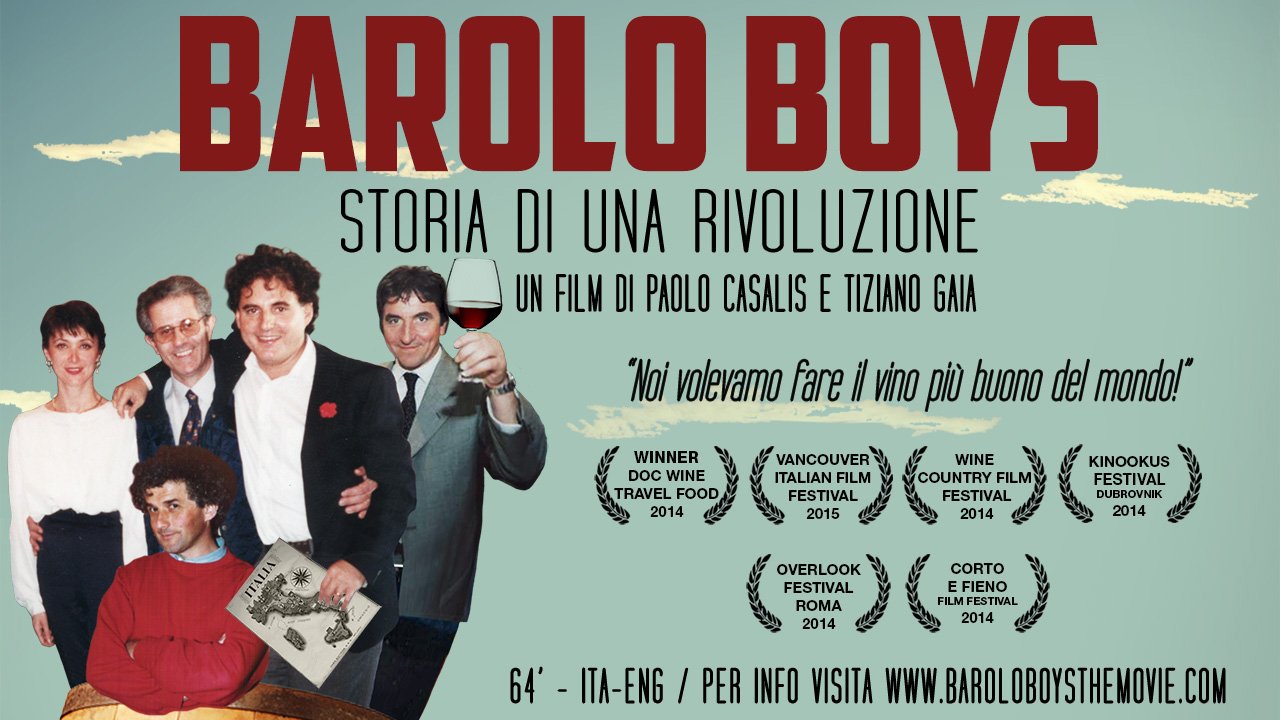Barolo, what to make of the ‘modernist’ vs. ‘traditionalist’ duality and where Australian Nebbiolo stands
In every wine producing region resting on multiple decades of history, wine producers have opposing views on winemaking practices. The modernist and traditionalist debate has been a defining feature of Barolo, and one that has divided producers and Barolo afficionados for decades. In Australia, this debate is hardly a topic of conversation. Here, Nebbiolo is grown parsimoniously yet it has shown great promise in the hands of a few talented winemakers. Tarrant Hansen of Spider Bill Wines is one of them. As he shared his experience making Nebbiolo in Piedmont and now here, it became apparent that pragmatism and practicality are two qualities some of the best winemakers, both traditionalist and modernist, have in common.
The scientific proof is in the Barolo
Science progressed our understanding of the chemical reactions that take place in the winemaking process, demystifying it and giving way to an international wine style engineered and powered by viticulture and oenology programs around the world.
In enabling more producers to put out better quality wines, modern techniques have led to more consistent wines that have conquered both the wine critics and general consumers. Today, there is more quality-driven wine hailing from Barolo and made by more producers, than ever before. Of the techniques that have had the greatest impact on wine quality, is extended hang time. It results in riper grapes, which in turn produce richer, more approachable wines with more immediacy. It’s this immediacy which has caused as much strife as fervour within the Italian winemaker community.
On the other side of the fence, some argue that this new international wine style order has disrupted indigenous cultures, suggesting a loss of diversity that has the pervasive effect of reducing consumers’ choices.
Disagreements aside, the rest of the world doesn’t seem to be as acutely aware of such a clash of ideologies, except perhaps when faced with the unpredictability in quality from one producer to another. That’s something Australian consumers of Barolo are quite familiar with, and potentially what’s played in favour of the Australia-made Nebbiolo wine category. But the fact of the matter is that today, we as consumers get to enjoy the nuances in what should be described as the best of both worlds.
Traditional beginnings
Historically, Nebbiolo grapes were fermented in rather large wooden casks, botti made of chestnut or Slovenian oak. The fermentation process would extend for long periods and the must was left in contact with the skins for as long, if not longer. The result was intensely coloured, highly tannic wines. Temperature control was not an option and bacterial spoilage was therefore a likely occurrence.
The wine was then aged in large casks, which encouraged a slow micro-oxygenation, an oxidative process that resulted in a final product akin to an aged wine with a brick-like colour, as opposed to a brighter red hue normally expected in young wines. The better producers knew how to make the most of these characteristics and their wines displayed heady preserved cherry and floral characters that set them apart.
Unfortunately, the location of the grapes dictated what traditionalist producers could achieve. The great ones who owned the best sites were able to produce great wines. But not even they were immune to bad weather. And so, their opportunities to make truly exceptional Barolo were far a few in between. For the more fortunate ones, it was possible to produce decent wine in most vintages within a decade, which solidified their reputation.
Alas, the ones with less desirable sites struggled. This was compounded by the fact that some producers lacked the experience and technical skills, and produced dull, thin, and bitter wines that were even more overwhelmed by the tannic nature of Nebbiolo.
After World War I, Italy emerged impoverished and weakened. With the advent of Mussolini to governance, protectionist policies propelled the country in an economic boom, which introduced significant societal and economic development. Despite wealth accruing, Langhe farmers still had limited access to education, resulting in gaping disparities and grim prospects for most. This outraged young Barolo producer Elio Altare and his Barbaresco peer, Angelo Gaja, who took it upon themselves to travel the world in search for solutions.
Elio and Angelo were the product of an ever more connected world. Becoming increasingly aware of their European neighbours’ triumphs, partly due to increased global demand for their wines and the generational wealth that ensued. They felt that Barolo’s potential was untapped and so misunderstood because it required decades before people could enjoy Nebbiolo’s beauty in its full glory.
Modern day tale
Determined to remedy that and inspired by the growing success of Burgundian producers whose fate couldn’t be further from their Italian counterparts’, the modernists emerged. This movement, which started in Barolo in the 1960s, culminated around the 1980s with the introduction of controlled temperature fermentation, which had the principal benefit of protecting the wines from spoilage, thus producing more balanced wines with vibrant fruit. They also introduced the use of new 225 litre French oak barrels, which were said to impart sweet tannins that offset Nebbiolo’s naturally harsh tannins.
Essentially, they brought contemporary winemaking and viticulture to the Langhe - higher precision work in the vineyard, lower yields of Crus vinified individually, the use of modern equipment, and cleaner cellars. But to characterise this revolution as stylistic and attributing its influence to different oak use and extraction length, would be overly simplistic.
The aim was to create balanced wines in a real effort to tame Nebbiolo’s tannins, and to add fruit, and produce a more graceful Barolo. This desire to produce a more elegant, fruit-forward, and market competitive Barolo was part of wanting to reinterpret ‘traditional’ winemaking and expand the possibilities for all. It stemmed from pure necessity to improve and evolve. Amid the ardent traditionalist vs. modernist debate, the rest of the wine world also experienced substantial progress in terms of clonal selection, redefining ripeness, favouring lower, more controlled yields using green harvesting, among other improvements in the vineyard.
Today, the collective gain can be seen in the region’s increasingly hybrid winemaking trend. Indeed, event those claiming to be super traditional have embraced modern approaches, starting with organic viticulture, and moving away from chemical pesticides and herbicides.
There is quality in both camps. In fact, the older these wines get, the less dissimilar they become. Many producers still fervently make traditional Barolo, such as Bruno Giacosa, Giacomo Conterno, Cavallotto or Marcarini. Modernist producers include Elio Altare, Angelo Gaja, Domenico Clerico or Mauro Veglio.
Australian state of wine
It was particularly helpful to hear Tarrant’s experience to establish whether this debate has legs in Australia, and how it’s impacted our understanding of Nebbiolo as we know it. Tarrant is the winemaker and director of Spider Bill Wines, a brand known for producing small batch wine from premium parcels in the Adelaide Hills. His exposure to the Old World and affinity for Italian varieties, especially Nebbiolo, makes him somewhat of an expert in the subject.
He recalled his 2012 vintage at Bera as an amazing experience. Although the cellar practices at Bera were fairly similar to those in cellars where he’d worked prior, the red wines maturation process differed. Yes, the fruit was crushed into stainless steel fermenters with pump overs performed two or three times a day as part of a thorough cap management program. But they used more large format oak, something a growing number of Australian winemakers are also doing. Secondly, basic cellar sanitation practices were also vastly different, hinting to the traditionalist way of doing things.
When asked about his take on the debate, Tarrant noted that choices of both fermentation and maturation vessels had the biggest impact and made the most difference in the quality of wine. Where traditional winemaking techniques would have used open wooden vats for fermentation, including the use of heading down boards to manage cap, modern techniques tend to involve more stainless steel whereby cap management is done by regular pump overs or irrigators. The traditional maturation process would have wine aged in decades old, large format oak, whereas modern maturation practices involve smaller format oak with potentially higher levels of new oak.
His Italian vintage experience stood somewhere in between. He explained that the wines were fermented in stainless steel with the use of active dry wine yeast and other modern additions, including pump overs. Ferments on skins occurred over 3 to 4 weeks before pressing. This all leaned toward the modern way. However, all the wines were aged in large format Slovenian oak, which he emphasised is at the heart of their philosophy, “letting the true expression of the fruit shine without being masked by lashings of new oak”.
From this experience, Tarrant had two key takeaways. First and foremost, the quality of the fruit is critical. Secondly, new oak should be used judiciously, especially in the making of Nebbiolo wines. He offered a fittingly nuanced conclusion by saying that although he leans toward the modern end of the scale, new oak in Nebbiolo is not part of his M.O.
Such a technical explanation goes to show how deliberate and involved a process winemaking is, and how scrupulous its protagonists ought to be for a variety as fickle as Nebbiolo to excel in the glass.
Whether you consider yourself a traditionalist or modernist partisan, you must appreciate both the romance in how random and unpredictable a good old Barolo can be, and the feeling of assurance when sipping on a vibrant, contemporary Nebbiolo.
Vaite Teriierooiterai
Our fine wine ambassador and inhouse wine writer. Born and raised in French Polynesia, Vai’s journey led her to South Australia 8 years ago, where she earned a Masters of Wine Business and made a life of fine Australian wine and food for herself. Whilst thriving in a diversity of customer-centric roles, Vai has grown strong roots in the local wine trade. When she is not catching up with friends and soaking up the exhilarating atmosphere of Adelaide’s booming wine bars and restaurants, Vai’s world revolves around learning about the intricacies of wine in preparation for her Wine and Spirit Education Trust (WSET) Diploma.





